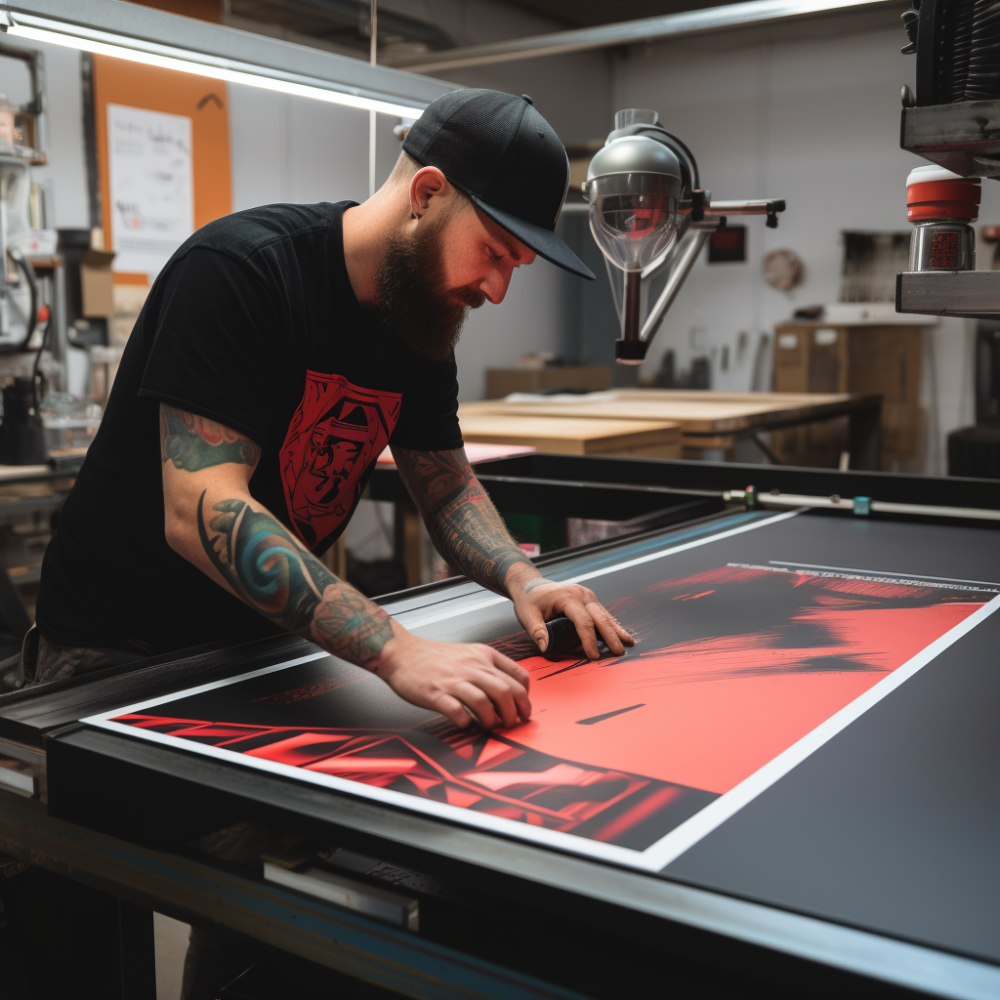
Screen printing is a fascinating process that merges creativity with methodology, resulting in vibrant designs that can be replicated across a variety of materials. At its core, screen printing is a technique that uses a woven mesh to support an ink-blocking stencil. The stencil forms open areas of mesh that transfer ink or other printable materials, which can be pressed through the mesh as a sharp-edged image onto a substrate. A squeegee is moved across the screen stencil, forcing ink into the mesh openings to imprint the substrate with the desired image.
This age-old method, also known as silkscreen printing, offers versatility and durability in printing, making it a preferred choice for creating bold canvases, custom apparel, and high-quality promotional items. Whether you’re looking to produce custom t-shirts for a corporate event, vibrant posters for a marketing campaign, or unique handcrafted goods, screen printing can meet your needs with its distinctive aesthetic and lasting impressions.
For businesses and brands looking to make a statement at events, Zodiac Event Displays offers a bespoke service that brings your vision to life with exceptional quality screen printed materials. From pop-up tents to market umbrellas, our screen printing solutions ensure that your brand stands out in a crowd. Send a message to info@zodiacdisplays.com to amplify your event marketing with custom screen printed products that resonate with your audience.
The Step-by-Step Screen Printing Process
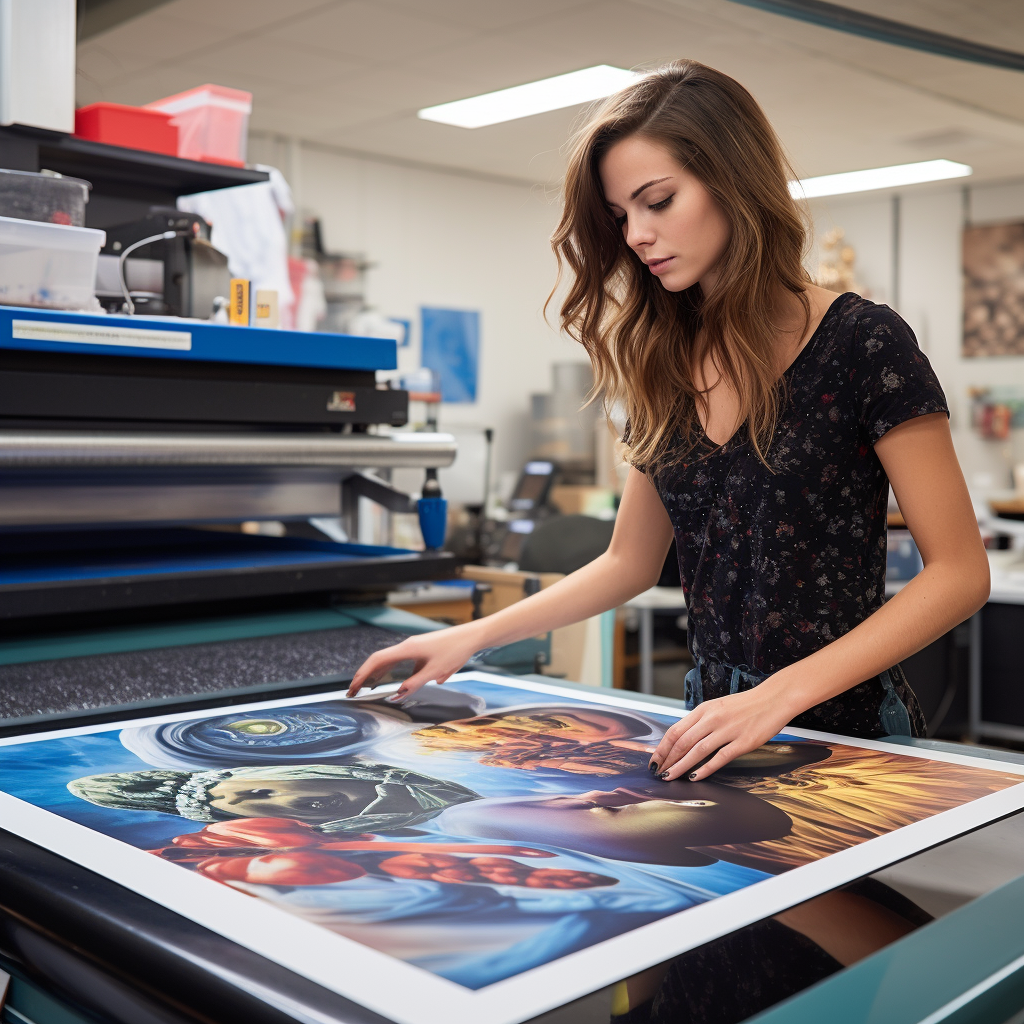
The screen printing process is a meticulous sequence that requires attention to detail at every stage to ensure the highest quality of the finished product. The first step involves creating the design that will be printed. This design is typically produced digitally, ensuring precision and ease of manipulation. Once the design is finalized, it is printed onto a transparent acetate film, which will be used to create the stencil.
Next, the chosen screen is prepared. Screens are usually made of synthetic materials such as polyester, and they need to be coated with a light-reactive emulsion before the acetate film is placed onto the screen. This screen is then exposed to bright light. The areas of the emulsion that are not covered by the design harden through exposure, while the areas covered by the design remain unhardened. After exposure, the screen is washed, revealing the stencil for the design.
After the screen dries, it’s time to align the screen on the printing press. Precise alignment is crucial to ensure the design is printed correctly on the substrate. Ink is then added to the top of the screen, and a squeegee is used to pull the ink across the screen, pushing it through the mesh and onto the substrate below. The substrate is dried, and if the design requires multiple colors, the process is repeated with separate screens for each color.
Once the printing is complete, the final step is to cure the ink, often with a heat source such as a flash dryer. This ensures the ink sets firmly on the substrate, creating a durable and vibrant print. The result is a high-quality, screen printed product ready for use in a variety of settings, from promotional events to retail merchandise.
Applications and Versatility of Screen Printing
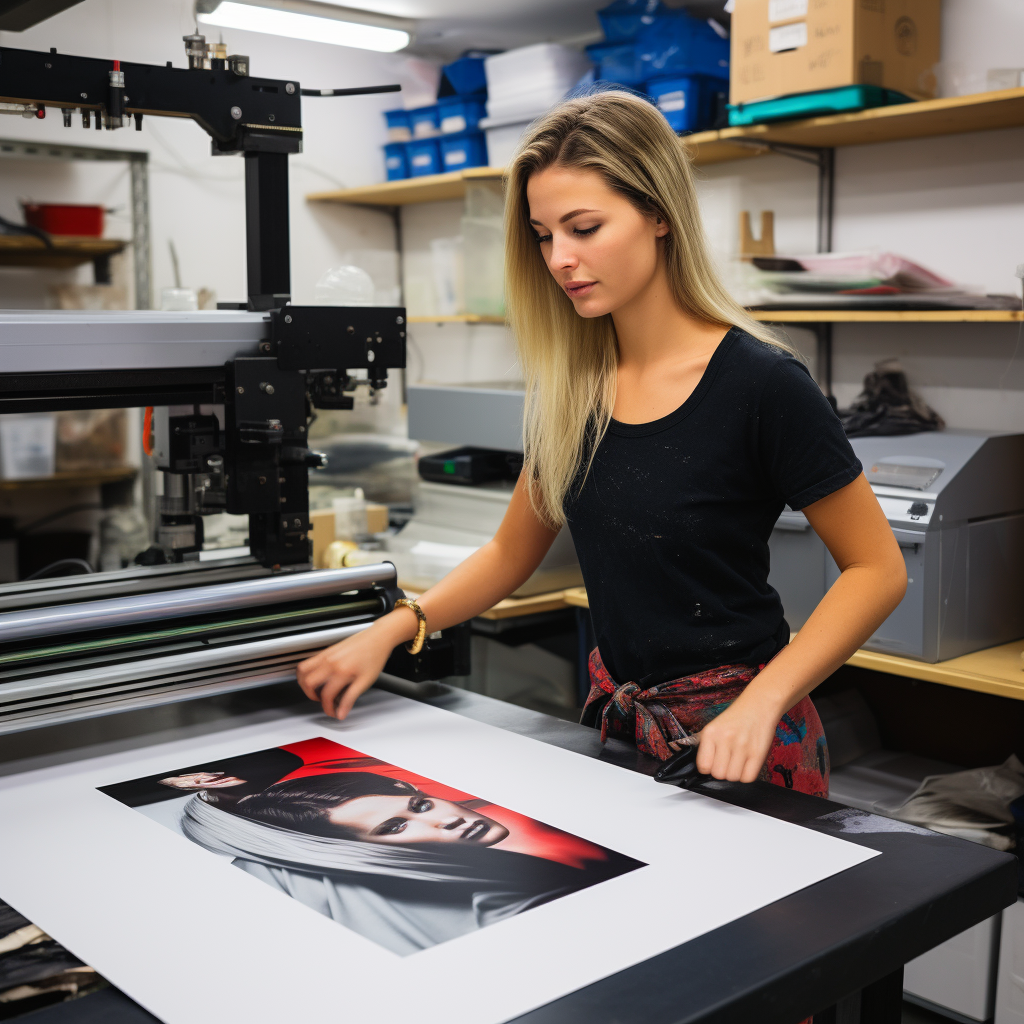
Screen printing stands out for its remarkable versatility, making it a preferred method for a myriad of applications across different industries. Textiles are the most common substrates for screen printing, with t-shirts, hoodies, and hats being popular items for personalization and branding. The ability to layer thick, vibrant inks makes screen printing ideal for producing bold, long-lasting graphics on fabric.
In the realm of advertising and event marketing, screen printing is often used to create custom banners, posters, and signage. The durability of screen-printed materials is particularly beneficial for outdoor promotional items that need to withstand the elements. Similarly, it is a go-to technique for producing promotional products like tote bags, pens, and notebooks, which serve as tangible brand reminders.
The technology sector also leverages screen printing for the creation of circuit boards and other electronics, where precision and the ability to deposit specific materials onto substrates are critical. Moreover, the automotive industry employs this technique for printing on parts and panels. The inks used in screen printing can be formulated to adhere to a variety of surfaces, including metal, glass, wood, and plastic, further illustrating the process’s adaptability.
One of the most exciting aspects of screen printing is its application in fine art. Artists often choose screen printing to produce original artworks or limited-edition prints because of its unique texture and quality. Andy Warhol’s famous silkscreens exemplify how screen printing can be used for artistic expression, contributing to the process’s cachet as a legitimate artistic medium.
In conclusion, the applications of screen printing are as diverse as they are numerous, spanning from utilitarian purposes in industrial manufacturing to creative expressions in art galleries. This widespread applicability underscores the inherent adaptability and enduring relevance of the screen printing process.
Comparing Screen Printing with Digital Printing

When considering what does screen printing mean in the context of other printing methods, it’s essential to compare it to digital printing. Both techniques have their unique strengths and are suitable for different project requirements. Screen printing is characterized by its ability to produce vibrant, opaque colors, making it perfect for designs that require a high level of vibrancy or need to be printed on dark backgrounds. The ink in screen printing is applied in layers, which can create a tactile texture and a sense of depth to the printed image.
Digital printing, on the other hand, offers a level of detail and color variation that is difficult to achieve with screen printing. It’s an ideal choice for intricate designs with multiple colors or gradients, as it can reproduce them without the need for separate screens. Digital printing is also typically faster and more cost-effective for small runs because it doesn’t require the setup time that screen printing does.
Turnaround time is another factor to consider. Digital printing can often be completed more quickly than screen printing, which is advantageous for tight deadlines. However, for large volumes, screen printing can be more efficient and cost-effective as the setup costs are distributed across a larger number of items.
Durability is also a point of differentiation. The heat-cured inks used in screen printing are known for their longevity and resistance to weathering and washing. Digital prints, while high in quality and resolution, may not have the same level of durability as screen-printed items, especially when exposed to outdoor conditions.
In summary, both screen printing and digital printing have their place in the production of printed materials. The choice between the two will depend on the specific needs of the project, including the design complexity, order quantity, material substrate, and desired durability of the finished product.
The Benefits of Choosing Screen Printing for Your Project
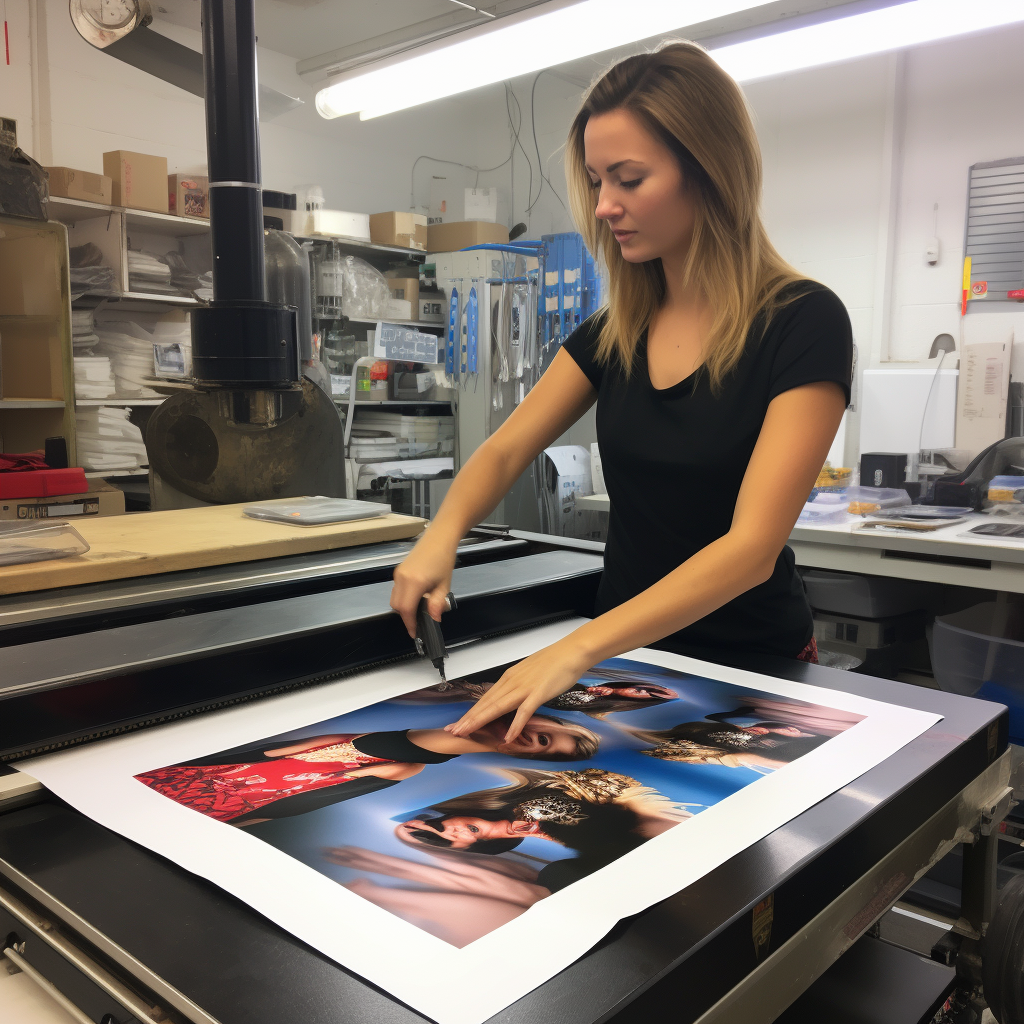
Screen printing offers a plethora of benefits that can be advantageous for various projects, solidifying its status as a preferred technique for many businesses and designers. One of the most significant benefits is the superior quality of the prints it produces. The vibrancy of screen printing is unmatched, especially when it comes to garments and fabrics, where the ink becomes part of the material, ensuring that the design doesn’t peel, crack, or fade over time.
Versatility is another hallmark of screen printing. This method can be applied to a multitude of surfaces including textiles, ceramics, wood, paper, glass, and metal. Moreover, screen printing accommodates various types of inks and finishes, allowing for a customized look whether one is aiming for a glossy, matte, or textured outcome.
For those requiring large quantities of a single design, screen printing is particularly cost-effective. The initial setup might be more time-consuming and costly, but once in place, the cost per unit is considerably lower, making it an ideal choice for high-volume orders. Additionally, the durability of screen-printed items means that they can withstand the test of time, which is particularly beneficial for promotional items that are intended to leave a lasting impression.
Consistency across a print run is another benefit. Once the screens are created and the process is underway, each item is printed under the same conditions, ensuring uniformity and quality control throughout the batch. This reliability is crucial for brands that rely on consistent branding and quality across their promotional materials.
Ultimately, choosing screen printing for your project means opting for a tried-and-true method that offers durability, versatility, and cost-effectiveness for large runs. The tactile and vibrant prints produced by this method can elevate the perceived value of the product, making it an excellent choice for projects that require a premium look and feel.
Future Trends in Screen Printing Technology
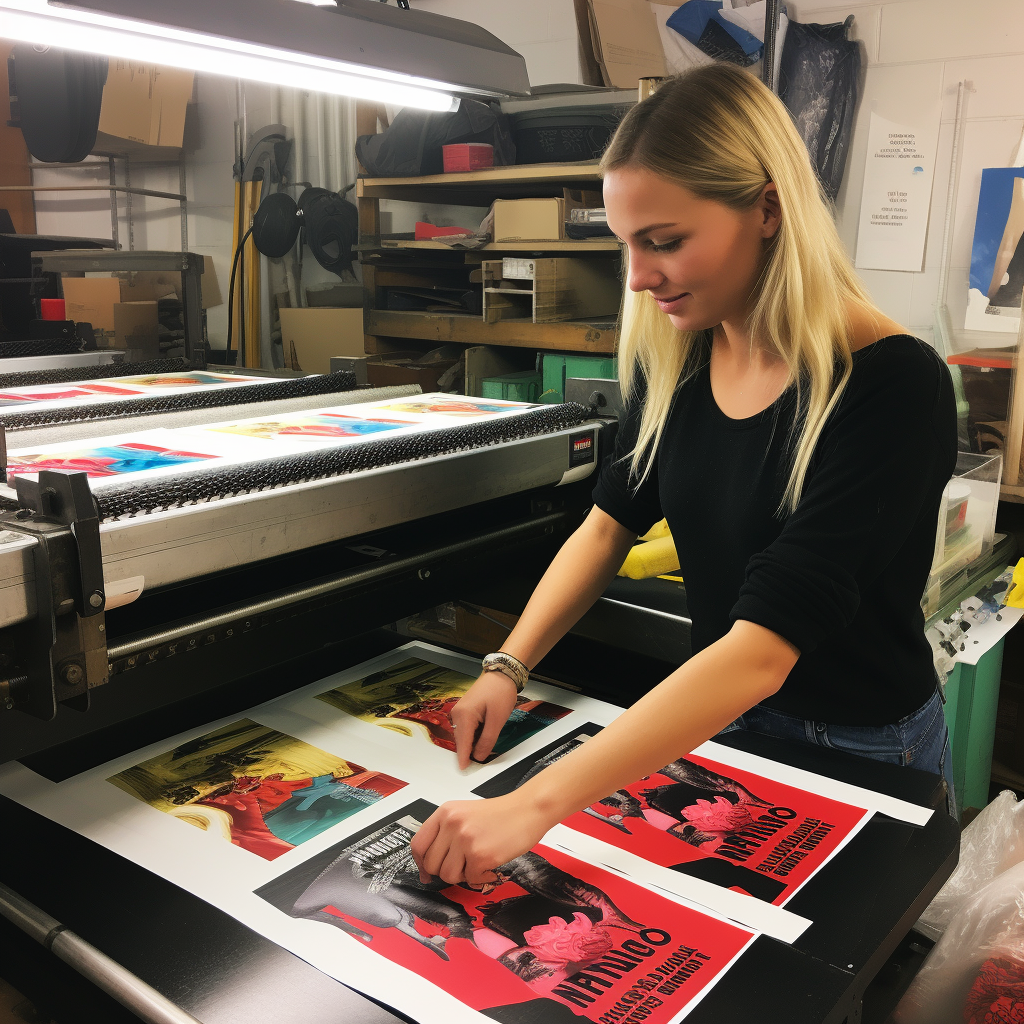
As we look to the future, the realm of screen printing is poised to embrace innovative trends and technological advancements that aim to further enhance efficiency and creativity. One of the exciting developments is the advent of digital screen printing, which combines the detail and versatility of digital printing with the durability of traditional screen printing techniques. This hybrid approach allows for more intricate designs and a faster turnaround time, particularly beneficial for custom, on-demand projects.
Automation in screen printing processes is another trend set to revolutionize the industry. Automated presses increase production speed and reduce labor costs, while also improving consistency and reducing human error. Eco-friendly practices are also becoming more prevalent, with a push towards sustainable inks and recycling processes to minimize environmental impact.
Additionally, advancements in 3D printing technology are beginning to intersect with screen printing, opening up new possibilities for tactile effects and dimensional designs. This innovation could redefine what is possible in terms of product personalization and customization.
As these trends continue to unfold, businesses looking to stay ahead of the curve will need to partner with forward-thinking screen printing providers. Zodiac Event Displays is committed to incorporating these future trends into our services, ensuring that our clients benefit from the latest in screen printing technology.
Whether you are looking to refresh your brand’s promotional materials or create standout event signage, our team is equipped to bring your vision to life with cutting-edge solutions. To explore how screen printing can elevate your next project and to stay abreast of the latest trends, send a message to info@zodiacdisplays.com to amplify your event marketing.









